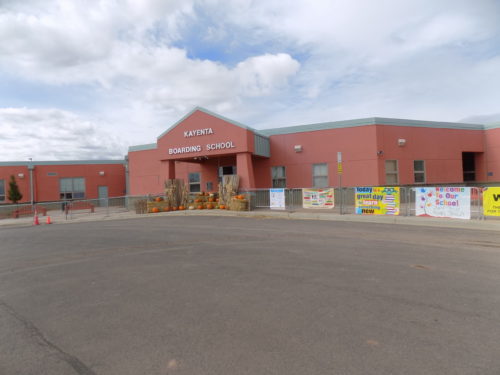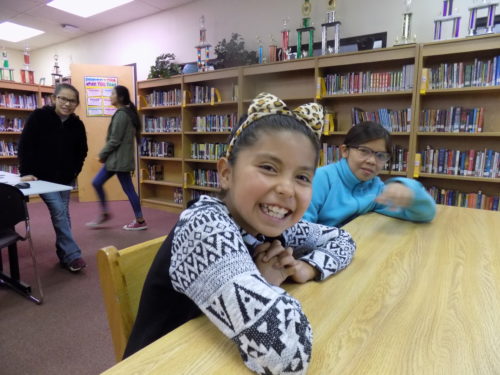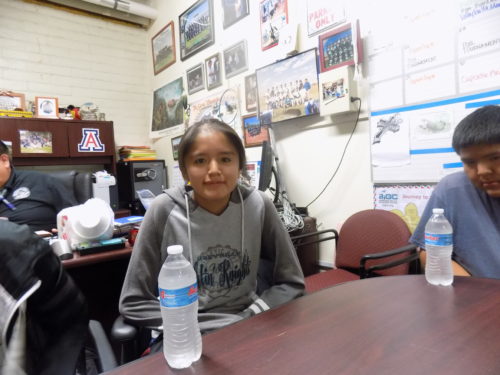*Note: This blog was written prior to the COVID-19 pandemic. Although much has changed regarding our sponsored children’s learning experience in the past months, our On the Road stories remain relevant in regards to our volunteer coordinator’s work and the impact of sponsorship on children in our program thanks to our sponsors. We are pleased to continue to share stories with you about our work.
***
Located in rural and mountainous Letcher County, the community of Fleming-Neon, Kentucky, has deep roots in the coal mining industry.
The Elkhorn Coal Corporation moved into the area in 1913, establishing the mining town of Fleming and several satellite communities, including a town called Chip.
“They said that while students enrolled in our program waited to be sponsored, it meant the world to them to receive coats and warm clothes, as well as school supplies and other basic essentials,” expressed Renée.
Local tradition holds that when the train that hauled coal from the mine in Fleming made stops in nearby Chip, the conductor would holler instructions to people climbing aboard to “knee on,” and that this exclamation morphed into the town’s present name, Neon. Coal from this region once fueled factories, powered locomotives, and heated millions of homes.
However, with the sharp decline of the coal industry due to automation and the increased use of other fuels, the lack of employment opportunities has fueled widespread poverty and depopulation throughout the region.
Today, the Fleming-Neon community has a population of only about 650 people – roughly half of what it was in 1980. Moreover, the median household income here is lower than even the Letcher County average, and nearly half of this community’s population lives below the poverty line. Families here struggle to afford even basic needs.
Meeting with Candi and Anne
Our affiliated project, Fleming-Neon Middle School, serves children in grades 6th through 8th.
“Fleming-Neon Middle is the feeder school for our affiliated, Martha Jane Potter Elementary School. For our sponsors at these projects, they have the best continuity with their relationships with the kids, as they can follow them from elementary school through middle and on to Letcher County Central High School as well,” explained Renée.
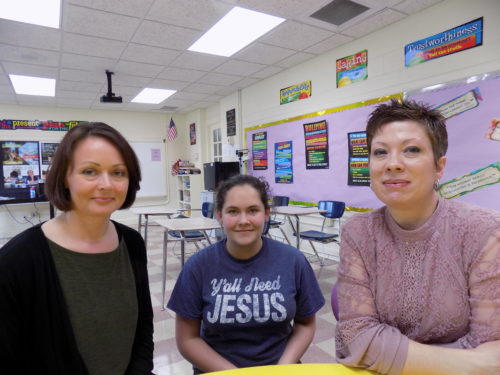
Candi and Anne with one of our sponsored children at Fleming-Neon Middle School.
While recently visiting the school, our Director of U.S. Programs, Renée Kube, met with the school’s guidance counselor, Candi, as well as the Family Resource Youth Services Center Coordinator, Anne, who run our sponsorship program together.
“While meeting with Candi and Anne in Candi’s office, they expressed how thankful they were for not only Hope In Action Funds that we provided to the school but for Warm Clothing Funds as well.”
“They said that while students enrolled in our program waited to be sponsored, it meant the world to them to receive coats and warm clothes, as well as school supplies and other basic essentials,” expressed Renée.
Patiently waiting for a sponsor
After their meeting concluded, Renée met with a few unsponsored children who have benefited from our special funds.
Ben* is a sixth-grader who is full of humor and has an outsized personality. He loves to wear boots and camouflage clothing. Ben and his younger sister live with their parents, both of whom are disabled and unemployed.
“Ben is utterly confident in who he is. I asked him if he has begun thinking about his interests and what he might do with his future, and he said probably a coal miner or a diesel mechanic or a Marine,” said Renée.
Next, Renée met Crista.* Crista is in sixth grade. She enjoys science and solving puzzles, and she is interested in becoming a doctor because the idea of diagnosing illness sounds interesting to her. She has two older sisters and one younger brother. Crista’s mom is a homemaker. Her father is unemployed at this time, but he gives back to the community by serving as a volunteer firefighter.
After Crista returned to class, Candi and Anne told Renée that Crista’s parents are responsible and loving but are really struggling. They feel a sponsor will be a huge help and boost in confidence for Crista.
*Names changed to protect the children.
***
How do I sponsor a child in Kentucky?
You can sponsor a child in Kentucky in one of two ways: call our office at 1-800-538-5381 and speak with one of our staff members or email us at sponsorship@children-inc.org.

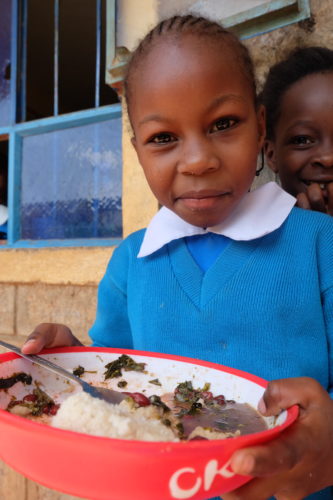 Children Incorporated has been battling food insecurity and hunger since the inception of our organization in 1964. Providing families and children with access to food has been an essential part of what we do through both our child sponsorship program and various other means including our International Feeding Program. Over the last five decades, we have provided food to hungry children through our support of backpack feeding programs, the establishment and support of food banks, through financing community gardens, and even by providing livestock to families in rural areas. Witnessing the joy and appreciation the parents express as they receive nutritious food to feed their hungry children only motivates us to do more.
Children Incorporated has been battling food insecurity and hunger since the inception of our organization in 1964. Providing families and children with access to food has been an essential part of what we do through both our child sponsorship program and various other means including our International Feeding Program. Over the last five decades, we have provided food to hungry children through our support of backpack feeding programs, the establishment and support of food banks, through financing community gardens, and even by providing livestock to families in rural areas. Witnessing the joy and appreciation the parents express as they receive nutritious food to feed their hungry children only motivates us to do more.